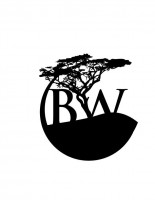There was a shootout. Andy and I weren’t there, but we learned through satellite text messages that Colonel Gui and his soldiers from the Congolese army ran into the bandits somewhere between Kisangani and Obenge—likely the brothers of Colonel Toms, a convicted war criminal and poacher. A gunfight ensued. One poacher was injured and two others were apprehended. Colonel Gui, with his prisoners in tow, is still coming to Obenge to route out poachers in the region. We should see them tomorrow.
I got the news during a four-day sampling hike through TL2 with Andy and the scientist John Hart [http://www.bonoboincongo.com]. But let me back up. After Kisangani, which is where I last blogged, we flew to Kindu, a town on the border of the 25,000 square mile jungle known as TL2. It’s the region Elephant Ivory Project-lead Samuel Wasser [http://depts.washington.edu/conserv/Director.html] wants elephant dung samples from most (read the previous posts to understand why). From Kindu, the three of us spent two days on the back of motorbikes, riding dirt paths notched into the jungle and savannah. These paths are arteries out of the bush. We saw locals pushing bicycles loaded with everything from pineapples to bush meat in the form of monkeys and okapi, a striped cousin of the giraffe. At the Lomami River, we loaded into motorized pirogues for a supposed two-day trip north to Obenge, the Hart’s research camp in the northern part of the proposed Lomami National Park. John stopped at every riverside village—about a dozen–to explain what the national park meant for the locals.
“When the park is made official, you will only be able to hunt on the west side of the river,” he told them. Most people seemed okay with the news. But at one fishing camp, by a hippo pool John said would be one of the park’s main attractions, we were met with a different reaction.
In a cage made with saplings there were 80 parrots; a monkey head grilling over a fire nearby. The birds, trapped in a wildlife reserve, were to be sold illegally on the exotic bird market. After hours of heated discussion with the lead trapper, a man with a CITES permit authorizing live collections in a different region of Congo (not the reserve), John called Congo’s wildlife management agency. They’re sending agents to the camp to shut down the operation.
The tragic news is the poachers had already spooked the hippos out of their pool, and the animals are unlikely to return anytime soon. And as we left the pool, we saw a lone hippo swimming in the middle of the river.
“He’s got to swim 50 miles upstream to find more suitable habitat,” John said. “That’s a long shot.”
We made it to Obenge five days ago. It’s a 200-person village so remote the buildings are built entirely from bush materials. The walls are mud, the roofs thatch, and the stoves open fires. Most people hunt and fish for a living but 15 locals work for the Harts as scientific assistants and laborers. John dedicated all of them to helping the Elephant Ivory Project.
After an evening relaxing and eating fish and rice around smoky fires, the locals laughing good-heartedly at our attempts at Swahili, we woke early to head into the bush in search of elephants. John split the crew. He sent six people to the west to sample elephant dung while Andy, John and I sampled along the river.
For four days, we bushwhacked on paths that John’s team created two years ago. They had deteriorated into thorny tunnels through the bush and with 60 pound packs, even though the terrain is flat, it took us all day to hike just 10 kilometers. There are ungodly numbers of bees and ants in the Congolese jungle. One night, so many fire ants raided our camp we couldn’t leave our tents to pee—don’t ask what we did. We saw a horned viper and heard the call of a new species of monkey, the Lesula, which the Hart’s identified two years ago. But we saw no elephants. John explained why at a clearing created by foraging elephants. It was beginning to grow back.
“The amount of vegetation growing in around the edges tells me it has been at least a decade since elephants have passed through here,” John said. “Part of that’s because of poaching, but part of it’s because TL2 is the size of West Virginia. Elephants could be anywhere.”
We returned to Obenge last night, and though comforted by hot plate of rice and beans, we couldn’t help feeling a little defeated and a lot exhausted. We’d been in Congo for three weeks and didn’t have a single sample to show for it. There is some good news though. That night, the second team returned to camp with five vials of dung. They’d headed farther in the jungle and located elephants. It’s a relief. We’re taking tomorrow off to rest. The next stage of the expedition depends largely on the situation with Colonel Gui and his prisoners. We’ll fill you in on that story, and the story of Moses the cross-burner poacher, when John Hart returns to Kisangani at the end of the week. Stay tuned here at on the Spot Messenger [http://international.findmespot.com/] map on the Elephant Ivory Project’s website [elephantivoryproject.org] Pictures from the expedition and Andy’s account coming early next week.
–Trip Jennings and Kyle Dickman
Thanks very much to Terese Hart and the Bonobo in Congo Project for the photos.
Project Sponsors:













